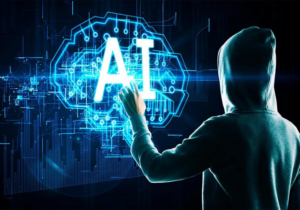
Artificial Intelligence (AI) stands as a cornerstone of modern technology, revolutionizing industries such as healthcare, finance, and transportation. In cybersecurity, AI offers a double-edged sword: it enhances threat detection and defense mechanisms while also empowering cybercriminals to develop more sophisticated attack strategies. This post delves into the dual role of AI in cybersecurity, exploring its benefits and potential dangers.
The Growing Importance of AI in Cybersecurity
As cybersecurity threats become more complex and frequent, traditional defense mechanisms often fall short. AI, with its ability to process vast amounts of data and identify patterns, emerges as a powerful tool in the cybersecurity arsenal. From automating threat detection to enhancing incident response, AI’s contributions are transformative. However, the same attributes that make AI a powerful defender also enable it to be a formidable adversary, as cybercriminals increasingly use AI to launch sophisticated attacks.
Enhancing Cybersecurity with AI
Automated Threat Detection
AI’s ability to automate threat detection is one of its most significant contributions to cybersecurity. Unlike traditional methods that rely on signature-based systems requiring prior knowledge of threats, AI can detect anomalies and potential threats without pre-existing signatures. Machine learning algorithms analyze vast amounts of data to identify patterns indicative of malicious activity. For instance, AI can analyze network traffic to detect unusual patterns that may indicate a Distributed Denial of Service (DDoS) attack.
Incident Response and Recovery
AI extends its role beyond threat detection to incident response and recovery. Automated response systems can take immediate action when a threat is detected, significantly reducing the time it takes to mitigate the impact of an attack. AI can isolate affected systems, block malicious traffic, and initiate recovery protocols without human intervention. This automated approach enhances the efficiency of incident response and allows cybersecurity professionals to focus on more complex tasks.
Behavioral Analytics
AI excels in behavioral analytics by continuously monitoring user behavior to establish a baseline of normal activity and detect deviations that may indicate a security threat. This capability is particularly valuable in identifying insider threats. AI can detect subtle changes in user behavior that might go unnoticed by traditional security measures, enabling organizations to address potential threats before they escalate.
Advantages of AI in Cybersecurity
AI’s contributions to cybersecurity offer several advantages:
- Real-time Threat Detection and Response: AI systems can detect and respond to threats in real time, significantly reducing the window of opportunity for attackers.
- Improved Accuracy: AI minimizes human error, a common vulnerability in traditional security measures.
- Scalability: AI can handle vast amounts of data, making it suitable for large organizations with complex IT infrastructures.
- Continuous Improvement: AI learns and adapts over time, ensuring that defense mechanisms remain effective against evolving threats.
The Dark Side of AI in Cybersecurity
AI-Powered Attacks
AI also equips cybercriminals with new tools to enhance their attack strategies. AI-powered attacks, such as the use of AI in malware creation, represent a growing concern. AI-driven malware can adapt its behavior to evade detection, making it more challenging to identify and neutralize. AI can also automate phishing attacks, generating highly convincing emails tailored to the recipient’s behavior.
Adversarial Machine Learning
Adversarial machine learning poses a significant threat, where attackers manipulate AI systems to achieve malicious objectives. Techniques like data poisoning involve introducing malicious data into AI models’ training datasets, causing incorrect predictions or classifications. For instance, an attacker could poison the training data of a facial recognition system, leading it to misidentify individuals or grant unauthorized access.
Deepfakes and Social Engineering
AI’s capabilities in generating realistic content have given rise to deepfakes, synthetic media created using deep learning techniques. Deepfakes can convincingly replicate individuals’ appearance and voice, making them a powerful tool for social engineering attacks. Cybercriminals can use deepfakes to impersonate executives, tricking employees into divulging sensitive information or authorizing fraudulent transactions.
Challenges and Risks of AI in Cybersecurity
Unpredictability and Transparency
AI systems, especially those based on deep learning, often operate as “black boxes,” making it difficult to understand how they arrive at their decisions. This lack of transparency can be problematic in identifying and addressing vulnerabilities within AI systems.
Bias and Ethical Concerns
AI systems may inadvertently introduce biases or make incorrect decisions, leading to unintended consequences. For instance, an AI system trained on biased data may unfairly target certain individuals or groups. The rapid pace of AI development also outstrips regulatory frameworks’ ability to keep up, resulting in a landscape where the legal and ethical implications of AI use are not fully addressed.
Case Studies: AI in Cybersecurity
Successful Uses of AI
Darktrace: Darktrace’s AI-driven platform, the Enterprise Immune System, uses machine learning to detect and respond to threats in real-time. By analyzing network traffic and user behavior, Darktrace’s AI can identify anomalies indicative of cyberattacks and take immediate action to mitigate risks.
Cylance: Cylance’s AI-based antivirus solution uses machine learning to detect and block malware before it executes. Cylance’s AI models are trained on a vast dataset of known malware and benign files, enabling it to accurately classify new and unknown threats.
AI Exploited by Cybercriminals
Emotet Malware: Emotet uses AI algorithms to analyze and adapt to victims’ behavior, allowing it to spread more effectively and evade detection. By mimicking legitimate network traffic and email communications, Emotet can bypass traditional security measures.
Deepfake Phishing Attack: Cybercriminals used deepfake technology to impersonate a CEO’s voice in a phone call, successfully tricking an executive into transferring $243,000 to a fraudulent account. This case highlights the potential of AI-driven social engineering attacks.
Ethical and Legal Considerations
Privacy Concerns
AI in cybersecurity raises significant privacy concerns. AI systems often require access to large amounts of data, including sensitive personal information. Balancing security and privacy requires careful consideration of data collection and usage practices.
Regulation and Compliance
Existing laws and regulations related to AI in cybersecurity are often fragmented and lagging behind technological advancements. Developing comprehensive regulatory frameworks specifically addressing AI in cybersecurity is necessary to provide clear guidelines for organizations and ensure accountability.
Accountability in AI Decision-Making
Determining accountability for AI-driven decisions is critical. Transparency in AI decision-making is essential for accountability, helping identify and correct errors, and building trust among stakeholders.
Future Directions and Recommendations
Advancements in AI Technology
Emerging trends such as explainable AI (XAI) aim to address the “black box” problem by making AI systems more interpretable. Integrating AI with other technologies, like blockchain, can create more secure systems. AI can enhance blockchain-based security measures by providing real-time analysis of transactions and detecting fraudulent activities.
Building Resilient AI Systems
Designing robust and secure AI systems is paramount. Organizations should adopt a multi-layered approach to AI security, incorporating regular audits, data quality assurance, human oversight, and explainable AI techniques.
Collaborative Efforts
Addressing AI in cybersecurity requires collaborative efforts across industry, government, and academia. Public-private partnerships, research initiatives, and education programs can enhance the collective ability to combat AI-driven threats and develop effective defense strategies.
Conclusion
AI represents a double-edged sword in cybersecurity. Its ability to enhance threat detection, incident response, and behavioral analytics offers significant advantages in defending against cyber threats. However, the same technology also empowers cybercriminals to develop more sophisticated attacks. To harness AI’s potential in cybersecurity, a balanced approach that considers both its benefits and threats is essential. Ethical and legal considerations must be addressed to ensure that AI deployments respect privacy, fairness, and accountability. Collaborative efforts and continued innovation are crucial in building resilient AI systems and staying ahead in the ever-evolving landscape of cyber threats. By leveraging AI’s capabilities while mitigating its risks, we can create a safer and more secure digital environment for all.
By: Chad Barr – Director of Governance, Risk & Compliance – CISSP | CCSP | CISA | CDPSE | QSA






